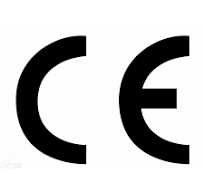-
About us
-
Product
-
News&Events
Understanding Quality Disappearing Ink Tattoo Removal: A Comprehensive Guide
2025-04-05
The concept of disappearing ink tattoos has gained traction in recent years, appealing to individuals who seek the freedom of self-expression without the long-term commitment of traditional tattoos. These tattoos utilize specially formulated inks that are designed to fade over time, often within a few years. However, as these tattoos age or if individuals change their minds, effective removal techniques become essential.
One primary method of removing disappearing ink tattoos involves laser technology. Q-switched lasers are particularly effective, as they emit short pulses of high-energy light that can break down the ink particles in the skin. For disappearing ink, which may contain different formulations to ensure gradual fading, it is crucial to understand the specific composition of the ink to choose the appropriate laser settings. Medical professionals must be trained to analyze the ink type and adjust the laser wavelength accordingly to optimize results while minimizing skin damage.
Another consideration in the tattoo removal process is the skin type and location of the tattoo. Different skin types react variably to laser treatments, and darker skin tones may require special attention to prevent hyperpigmentation. Moreover, the location of the tattoo can influence blood flow and healing, necessitating tailored approaches for each case.
Additionally, topical treatments are emerging as potential solutions for fading disappearing ink tattoos. Certain chemical agents can aid in breaking down the ink particles, though these treatments often require consistent application over extended periods to achieve desired results. Consequently, practitioners should educate clients about realistic timelines and outcomes when opting for non-laser methods.
Patient assessment plays a vital role in the tattoo removal process. A thorough consultation should be conducted to discuss the individual’s medical history, expectations, and any potential risks. By establishing a clear communication channel, practitioners can offer personalized care and build trust with their clients.
In conclusion, the quality of disappearing ink tattoo removal hinges on the understanding of the ink's properties, the patient's unique skin characteristics, and the selection of appropriate removal techniques. As the demand for such services continues to grow, medical professionals must stay informed about advancements in tattoo removal technologies and approaches. By doing so, they can provide effective solutions for clients seeking to erase their disappearing ink tattoos safely and efficiently.
One primary method of removing disappearing ink tattoos involves laser technology. Q-switched lasers are particularly effective, as they emit short pulses of high-energy light that can break down the ink particles in the skin. For disappearing ink, which may contain different formulations to ensure gradual fading, it is crucial to understand the specific composition of the ink to choose the appropriate laser settings. Medical professionals must be trained to analyze the ink type and adjust the laser wavelength accordingly to optimize results while minimizing skin damage.
Another consideration in the tattoo removal process is the skin type and location of the tattoo. Different skin types react variably to laser treatments, and darker skin tones may require special attention to prevent hyperpigmentation. Moreover, the location of the tattoo can influence blood flow and healing, necessitating tailored approaches for each case.
Additionally, topical treatments are emerging as potential solutions for fading disappearing ink tattoos. Certain chemical agents can aid in breaking down the ink particles, though these treatments often require consistent application over extended periods to achieve desired results. Consequently, practitioners should educate clients about realistic timelines and outcomes when opting for non-laser methods.
Patient assessment plays a vital role in the tattoo removal process. A thorough consultation should be conducted to discuss the individual’s medical history, expectations, and any potential risks. By establishing a clear communication channel, practitioners can offer personalized care and build trust with their clients.
In conclusion, the quality of disappearing ink tattoo removal hinges on the understanding of the ink's properties, the patient's unique skin characteristics, and the selection of appropriate removal techniques. As the demand for such services continues to grow, medical professionals must stay informed about advancements in tattoo removal technologies and approaches. By doing so, they can provide effective solutions for clients seeking to erase their disappearing ink tattoos safely and efficiently.
 |
 |
 |
 |
Contact us
ADD:2rd floor, Building No.7, Maohuagongchang, Nancaizhen, Shunyi District, Beijing, China.
Phone:0086-15210506323
Whatsapp:0086-15210506323
Email:nancy@sanhebeauty.com
© COPYRIGHT 2024 Sanhe Beauty S & T Co.,Ltd ALL RIGHTS RESERVED Powered by : www.300.cn SEO
Business license

MESSAGE




